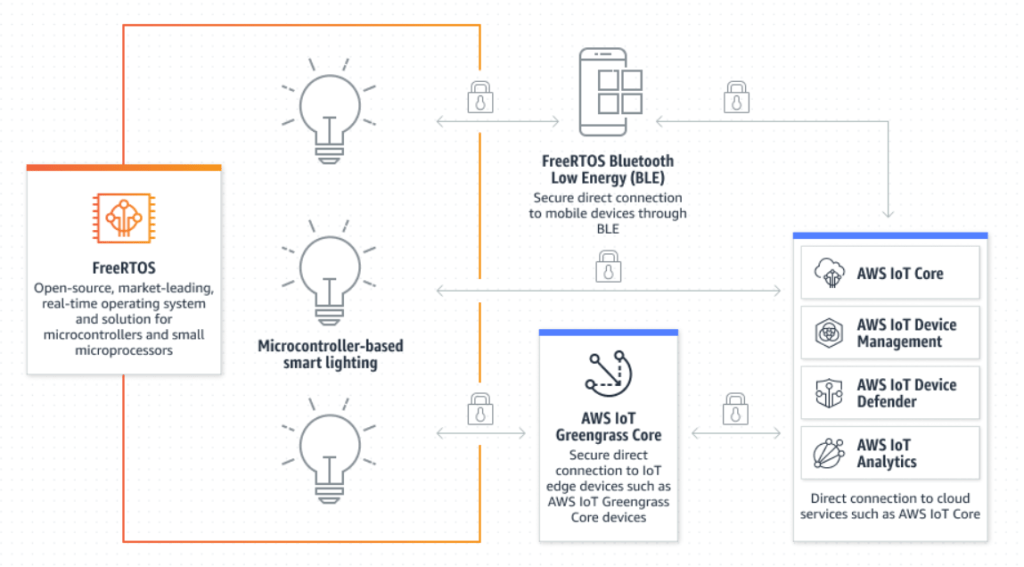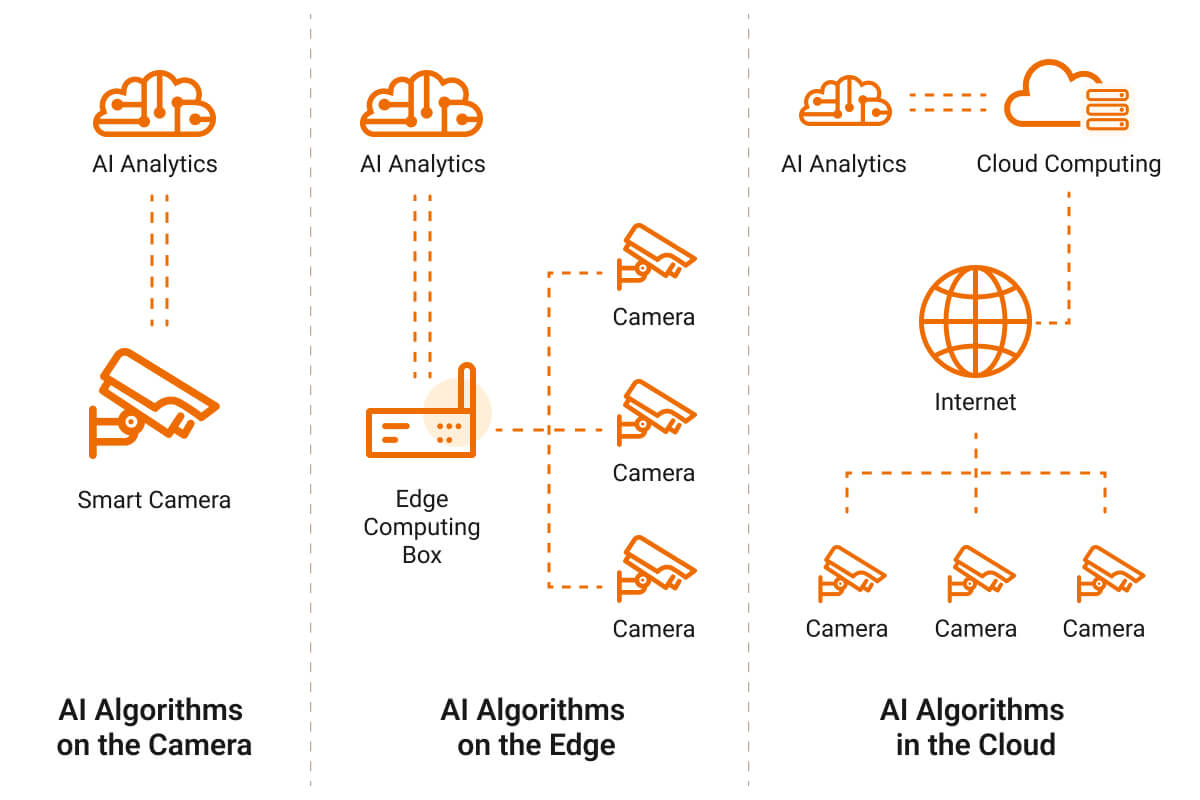An operating system serves as an intermediary between hardware and users. It is software that provides the ideal environment for applications and handles all the fundamental functions including processing input and output, managing files, memory, processes, and external devices like disk drives.
What are IoT Gateway Hardware Operating Systems?
For IoT devices to communicate with cloud services and other IoT devices over a global network, operating systems are typically designed with constrained memory and processing power. Among which, IoT gateway hardware uses operating systems that are a little different from those used by end nodes and devices. As more processing is moved to the network edges, IoT gateway hardware OS needs to be more capable. They are specifically created to function dependably in accordance with the requirements of IoT use cases, including cellular connectivity, mobility, interoperability, and more. Fog computing gateway hardware must internally carry out significant computational tasks and thus require a much more powerful OS.

How Do Operating Systems Work on IoT Gateway Hardware
In order to run applications, analyze data, and store data on the host IoT device without breaking a sweat, operating system integrated within an IoT gateway device serves as its brain and central nervous system. It controls all of the hardware and software on the device and allots all of the resources.

The IoT gateway’s operating system also enables it to interface with cloud computing services as well. It processes data onboard, and requires dependable connectivity to keep in touch with the control systems. Meanwhile, they may also have visual displays or employ voice and facial recognition technology for authentication. Some IoT operating systems on the gateway hardware have the ability to carry out simple computer operations, this is the so-called IoT edge computing.
Linux OSs are the Dominator of IoT Gateway Operation System
The first open-source operating system, Linux, was created with the goal of being as adaptable and powerful as possible. It is largely responsible for the success of today’s operating systems: Windows and Mac OS are both built on it, while Android is merely a skin on a Linux kernel. Nowadays, IoT operating systems have also been dominated by Linux OSs in every way. It functions effectively on servers, gateways, sensors and Raspberry Pis.
Linux users can customize the operating system to meet their demands and those of their devices because to its enormous versatility. ‘Distributions’ of the Linux operating system are collections of its individual parts that are available. Users can thus have the components they require and omit the components they do not. Experienced developers will further customize their OS for their devices, making them more reliable and effective. Here are some commonly used IoT gateway hardware OS recommendation:
Linux@OpenWrt
OpenWrt is a Linux-based open-source alternative that is largely used in routers. Because it includes all of Linux’s features and uses package management to adapt the OS to the requirements of any IoT application, OpenWrt is a highly customizable operating system.
Running OpenWrt on IoT gateway hardware requires sufficient RAM for stable operation and adequate Flash to accommodate the firmware image. Any gateway device running OpenWrt OS must have 16/64 as a bare minimum, with at least 128 MB of RAM being ideal. Otherwise, it may be unstable in basic operatio. Example of OpenWrt Bluetooth/Zigbee to Ethernet gateway with 16/64 parameters can be found here.
Linux@Debian
The most widely used and well-known Linux distribution is Debian. Debian has a modest advantage over Ubuntu because of its reputation for stability. The risks of unexpected behavior and problems are quite low because Debian is only updated once new features have been thoroughly tested and approved by Debian’s development team. Debian is frequently chosen as the operating system for servers and gateways.
In addition to 32 and 64-bit architecture, 64-bit ARM, ARMv7, ARM EABI, 64-bit little-endian MIPS, 64-bit little-endian PowerPC, and IBM System z are among the many platforms on which Debian is available. Debian prioritizes maintaining everything FOSS, or free and open-source, and by default does not include any proprietary software in its repositories. Debian is frequently chosen by more seasoned users who wish to be in charge throughout the installation process and who want more input and manual tweaking for this reason. Example of Debian Industrial RS232/485 Gatewaycan be found here.
Linux@FreeRTOS
FreeRTOS (free Real-Time Operating System) is an open source operating system for microcontrollers. It is ideal for endpoint devices with limited memory and very low-powered networks because of its exceptionally small memory footprint. FreeRTOS is freely released under the MIT open-source license and AWS offers software libraries that give enriched capabilities such as connection, security, and over-the-air upgrades.
If you want to execute TLS and all other FreeRTOS libraries on your gateway hardware, you might need an application microcontroller with a processing speed of more than 25 MHz and more than 64 KB of RAM. Your microcontroller will only need 10 MHz processing speed and 16 KB of RAM if the networking processor is used to offload the communication and crypto stack (apart from MQTT). On the microcontroller, each executable image of FreeRTOS requires 128 KB of program memory.

Takeaway
There is no actual standard for which OS to use in IoT, thus choosing one requires a lot of work because you have to examine each OS separately. But these 7 factors are advised to be taken into account for developers when choosing which OS to use:
1. Footprint: IoT device limitations typically call for an operating system to use the least amount of memory, processing power, and onboard storage while carrying out its functions;
2. Scalability: to make development and integration easier, the operating system must be scalable and compatible with any sort of node or gateway;
3. Portability: usually, the operating system is ported to many hardware platforms. The portability will simplifies development and integration;
4. Modularity: the operating system with modular design can be expanded without going over its maximum footprint;
5. Reliability – Because many IoT devices are located remotely and are expected to function flawlessly for years, an IoT operating system needs to be extremely dependable. .
6. Security: IoT operating systems must prioritize security above everything else. The OS should offer features like secure boot, SSL support, components and drivers for encryption, etc. that enhance device security;
7. Connectivity – For IoT implementations, connectivity is essential. An IoT gateway operating system should support a variety of connectivity protocols, such as Ethernet, WiFi, BLE, IEEE 802.15.4, and others.



















